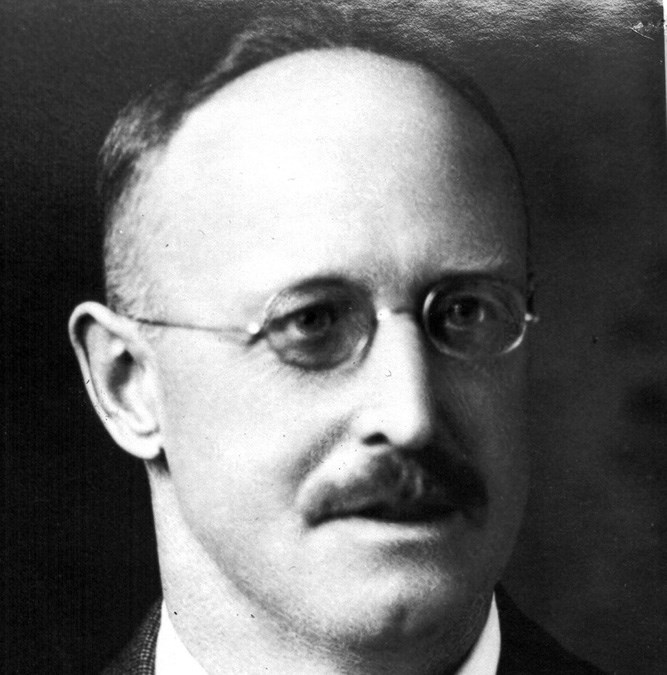One of Okotoks’ most northern roads was named after a former mayor and active member of the community.
Harold Banister immigrated to Canada with his family in 1884. It was an adventure he would never forget, as told in his memoirs entitled As I Remember.
“That I, but a mere lad of eleven years, should, with my father and three older brothers be sailing for the Northwest Territories, was unbelievable,” Banister wrote.
His father, A.E. Banister, who was a member of the Royal College of Veterinary Surgeons in London, chose to move his family of 14 to Canada for better opportunities, as the main jobs available in London at the time were as day labourers.
The plan was to leave for the new country with his four oldest sons and send back for his wife and the remaining eight children once a home had been established.
They landed in Quebec on Sept. 17, 1884 and endured a slow train trip across Canada, arriving in Calgary on Sept. 27.
“I shall never forget my first impressions,” wrote Banister. “We alighted from the train to view a small shack town with one store and one hotel.”
By late October, the five Banisters were busy building a shack to withstand the Canadian winter, which started out mildly and didn’t fall below 15 Fahrenheit until the end of December.
They established their homestead in the Davisburg area – a four-days’ journey from Calgary at the time – and built their home by catching floating logs that had escaped the boom in Calgary.
“With these we put up a log cabin on the south side of the hill,” wrote Banister. “It was no larger than 20 feet square with a mud floor and a mud roof. But crude as it was it meant home to us.”
That spring they stocked the homestead with livestock and worked land over the summer, adding to the herds the following year. Over time it continued to grow and was named by Banister’s father as “The Grotto.” The operation continued to be known as “The Grotto Stock Co.” for years to come.
In 1913, Banister and his wife, Laura, moved to Okotoks and he became heavily involved in the community as an avid curler, a member of the Masonic Lodge and the Elks Lodge, and a voice in the United Church choir.
“He also served as superintendent of the United Church Sunday School after being assured his love of horse racing did not make him unfit for the position,” said Okotoks museum specialist Kathy Coutts.
In 1932, Banister was elected mayor for a two-year term. He was re-elected in February 1934 for another two-year term, but was unable to see it through.
“He only served for nine months of his second term before he died in office,” said Coutts.
Banister Gate in Okotoks runs west from Northridge Drive before it becomes Banister Drive, which then curves south at Crystal Shores Road until it connects with Milligan Drive next to the Crystal Shores Beach House.
It’s fitting the road abuts the Wedderburn lands on Okotoks’ northeast end, as Banister’s granddaughter, Marie, is a descendant of both families. The Wedderburn lands set for development were owned by her uncle, the late Lawrie.
“It’s a bit interesting that Banister Gate goes past the Wedderburn homestead, and my mother, Pat Banister, married my dad, John Wedderburn,” said Marie Wedderburn, who lives in her parents’ home just north of Okotoks.
Her family is well-rooted in Okotoks, she said. All eight of Wedderburn’s grandparents’ children attended school in Okotoks and her mother was born in town.
There are also three Banisters on the Second World War memorial wall on Veterans Way in Okotoks, she said.
“The house they grew up in is still there also,” said Wedderburn.
“It faces McRae Street, but it’s actually on the corner of Poplar Avenue and Maple Street. At one time it was just a big lawn in front of their house, but there’s another building there now.”
She said growing up in the Okotoks area and attending school in town was very different in the 1950s and 1960s than it is today. When she graduated in 1964 there were 14 people in the Okotoks High School graduating class.
The once-rural community isn’t quite the same with the urban growth that has taken place over the last 60 years, she said.
“You sort of knew everybody,” said Wedderburn. “If you weren’t related they were distant relatives or friends.
“Everybody was in the same boat. My father was a farmer, like lots of people. We grew up in a rural community. It’s not a rural community anymore.”




